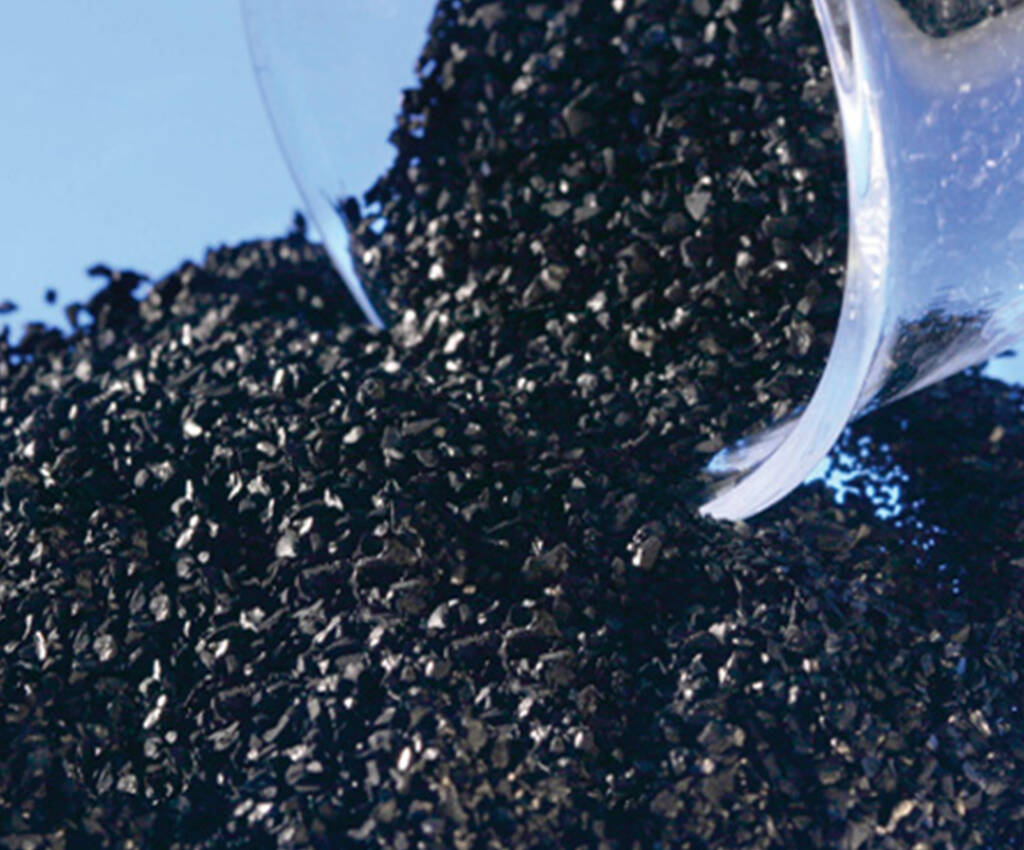Coal Based Granular Activated Carbon
Coal based granular activated carbon is a highly porous material derived from coal, which provides a large surface area for adsorption. Its granular form makes it particularly suitable for various filtration and purification applications across multiple industries.

Specifications
| Properties ASTM | Unit | Grade |
|---|---|---|
| MNG-60 | ||
| Iodine | Mg/gm | 600 |
| pH | 8 to 11 | |
| Hardness - Min. | % | 95 |
| L.O.D. - Max | % | 5 |
| Bulk Density | gm / Lit | 0.50 + 0.10 |
| Surface Area | m2 / gm | 700 |
Applications
Coal-based granular activated carbon is highly valued for its adsorption capacity, durability, and effectiveness across a wide range of applications. Its granular form allows for efficient filtration and purification in both large-scale industrial processes and smaller, more specialized applications.
Water Treatment

Drinking Water Purification: GAC is widely used in municipal water treatment plants to remove organic contaminants, chlorine, taste, and odor compounds from drinking water, ensuring safe and palatable water for consumption.
Wastewater Treatment: Employed in industrial and municipal wastewater treatment to adsorb organic pollutants, dyes, and other contaminants, helping to meet discharge standards and protect aquatic environments.
Groundwater Remediation: Utilized to treat contaminated groundwater by adsorbing volatile organic compounds (VOCs), pesticides, and other pollutants.
Air and Gas Purification

Air Filtration: Used in air purification systems to remove volatile organic compounds (VOCs), odors, and harmful gases in industrial settings, improving air quality.
Flue Gas Treatment: Applied in power plants and industrial facilities to remove mercury, dioxins, and other pollutants from flue gas emissions, helping to meet environmental regulations.
Food and Beverage Industry

Decolorization and Purification: Employed to remove colors, odors, and impurities from food products and beverages, such as sugar, syrups, juices, and alcoholic beverages, ensuring product clarity and quality.
Edible Oil Refining: Used to remove impurities and contaminants from edible oils, improving their taste, color, and shelf life.
Pharmaceutical Industry

Purification of Pharmaceuticals: Used in the production and purification of active pharmaceutical ingredients (APIs) and excipients to remove organic impurities, ensuring the safety and efficacy of pharmaceutical products.
Environmental Applications

Soil Remediation: Applied in the remediation of contaminated soils by adsorbing organic pollutants, making the soil safer for use or reducing its environmental impact.
Spill Response: Used in emergency spill response situations to adsorb hazardous chemicals and oils, mitigating environmental damage.
Industrial Applications

Chemical Processing: Used in various chemical processes to purify raw materials and intermediate products by removing impurities, enhancing the quality of the final products.
Gold Recovery: Employed in the mining industry to recover gold from cyanide leach solutions through adsorption, a process known as carbon-in-pulp (CIP) or carbon-in-leach (CIL).
Cosmetic and Personal Care

Skin Care Products: Incorporated into products like facial masks and cleansers for its ability to adsorb impurities and excess oils from the skin, promoting a clearer complexion.
Agricultural Applications

Pesticide Removal: Used to remove pesticide residues from irrigation water, ensuring safer water for crop irrigation.
Animal Feed Additive: Added to animal feed to adsorb toxins, improving animal health and reducing the risk of diseases.
Energy Sector

Gas Purification: Employed in the purification of natural gas and biogas to remove contaminants such as hydrogen sulfide and siloxanes, improving the quality and usability of the gas.
Textile Industry

Effluent Treatment: Used in the treatment of textile wastewater to remove dyes, chemicals, and organic pollutants, reducing the environmental impact of textile production.
Laboratory and Analytical Applications

Analytical Chemistry: Used in laboratories to purify solvents and reagents, ensuring the accuracy and reliability of analytical results.
Sample Preparation: Employed in sample preparation processes to remove interfering substances, enhancing the precision of analytical measurements.


